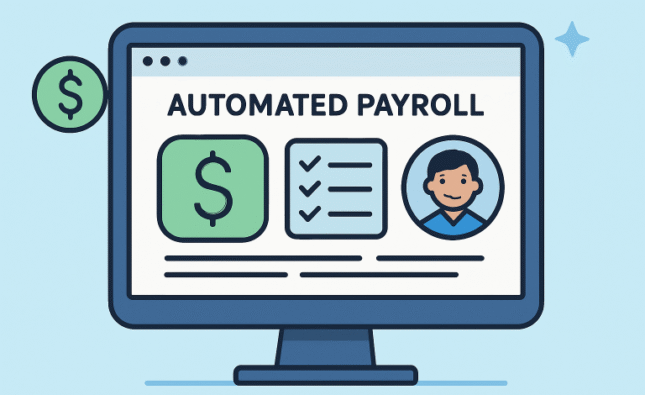Corporate training programs are conceptualized to enhance the growth and development of employees. They upskill and update each employee about the latest standards and best practices prevalent in the industry. Video presentations have, in the past few years, emerged as one of the most powerful tools in corporate training. Let us go through some of the top advantages of using video presentations in any corporate training program.
Better Engagement and Retention
Among the major benefits that one can get from utilizing video presentations in corporate training is increased engagement. Videos are more interactive than pure text or one-dimensional pictures. They both engage the visual and auditory media, which makes it much easier for people to grasp information. According to studies, a person is capable of remembering 95% of what the message of a video is, in contrast to just 10% when reading text.
Flexibility and Convenience
Video presentations provide the best flexibility and convenience. Workers can log into the training material at any time and from any place, allowing them to learn at their own pace. This is very helpful, especially when some companies have remote workers or those working in other countries where there might be variations in time zones. Since videos can be paused, rewound, and played back again, this can be very useful in ensuring that everyone has held the concept.
Consistency of Training
Video presentations offer another significant advantage of standardized training throughout an organization. If the training sessions are conducted in person, then their quality and delivery may vary depending on the trainer. In the case of video presentations, however, it is uniform and, therefore the same quality that is delivered to all the employees.
Cost-Effectiveness
Video presentations can help organizations train their employees at a low cost. These include no costs for travel, accommodation, and venue charges, which in the traditional system of training add up to a lot. Video presentations eliminate these costs and thus enable a firm to use the resources effectively. Moreover, a video presentation made once can be reused as many times as desired without bearing any extra cost.
Better Accessibility
This makes the video presentations easily accessible to all employees, even those who may have a disability. Subtitles, transcripts, and audio descriptions ensure that everybody can make use of the training videos. Inclusiveness of this sort does not only satisfy the demands of the law, it lays a base that creates room for a more diverse and inclusive work culture.
Better Knowledge Sharing
Video presentations enable easy sharing of knowledge within an organization. Well-cross-sectional videos on certain topics can be prepared by the subject experts and circulated within the company. This can guarantee that important knowledge and expertise in a specific domain do not remain confined to compartments but are shared with everybody who would require this.
Higher Motivation and Participation
Video presentations can enhance motivation and participation among employees to a great extent. The video may include features such as quizzes, polls, and discussion forums to make it more interactive for the employees to learn from. Only if the employees find the material of interest and interactive will they actively participate in the learning process.
Multimedia for an Enhanced Learning Experience
It enhances learning within the training materials with the use of multimedia. Videos can be made with the aid of animations, infographics, or even real-life situations that help elucidate abstract concepts. This approach to multimedia caters to different learning styles so all employees can benefit from the training.
Easy Tracking and Assessment
Video presentations can be monitored and evaluated to track the progress of workers better. Most video platforms come with tools for analytics and reporting that help make sense of how workers are consuming the training material. Completion rates, time spent on each module, and quiz scores could all contribute to critically assessing the effectiveness of the training program and highlighting areas that need attention or fine-tuning.
Scalability
Video presentations scale very well, and hence are suitable for large organizations. A company with 100 or 10,000 employees will have no problem sending out the videos or having them accessed by the employees. Therefore, this scalability ensures the ability of such training programs to grow within the organization without structural changes or new resources.
Creating Engaging Video Presentations
In that direction, the creation of a video presentation has to be at the center of activities towards the maximum benefits attainable. Integrate storytelling, real-life examples, and interactive elements when you are going to make a video presentation. High-quality visuals with a clear and concise narration will also help make it more interesting and effective.
Such a tightly constructed video presentation can turn humdrum training subjects into engaging learning experiences. Other than mere lecturing on compliance, video presentations can represent scenarios, animations, and even interviews with experts who make the subject relevant and interesting.
Boosting Creativity and Innovation
The videos can further enhance the creativity and innovativeness of the training program. Trainers can play around with various styles in video presentations, like explainer videos, interviews, and animated tutorials, just to keep them afresh and engaging. Such creativity not only adds to the learning experience at large but also speaks volumes about the commitment of the company towards employee development.
Conclusion
Video presentations in corporate training formats bring about a few benefits, from developing larger degrees of engagement and retention to being cost-effective and easy to scale. Video allows companies to put together far more powerful, inclusive, and diverse training programs that answer varied needs within their workforce. If you are going to make a video presentation, then focusing on the aspects of engagement and interactivity can further enhance these benefits by ensuring that your corporate training program will be effective and enjoyable.













